This article includes a list of references, related reading, or external links, but its sources remain unclear because it lacks inline citations .(July 2014) |
Following is a list of notable architects from Latvia.
This article includes a list of references, related reading, or external links, but its sources remain unclear because it lacks inline citations .(July 2014) |
Following is a list of notable architects from Latvia.
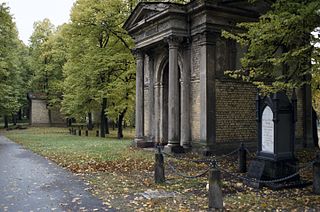
The Great Cemetery was formerly the principal cemetery of Riga in Latvia, established in 1773. It was the main burial ground of the Baltic Germans in Latvia.

Wilhelm Ludwig Nikolai Bockslaff was a Baltic German architect working in Riga. He is considered one of the most important representatives of Eclecticism, Neo-Gothic and Art Nouveau styles in the city. He is noted in particular for his construction of churches.
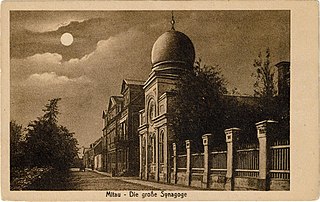
Oskars Aleksandrs Johans Bārs was a Latvian architect. He is most noted for his work in Jelgava. From 1875 to 1879 he designed and constructed the Jelgavas Synagogue in the city.

Eižens Laube was a Latvian architect. He was responsible for some of the reconstruction work of Riga Castle in the 1930s and designed more than 200 houses in Riga.
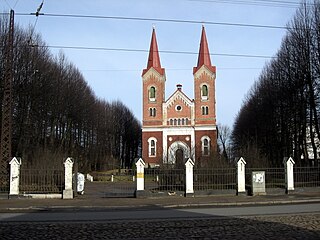
St. Martin's Church is a Lutheran church in Riga, the capital of Latvia. It is a parish church of the Evangelical Lutheran Church of Latvia. The church is situated at the address 34 Slokas Street. Church is consecrated in 1852 and designed in Neo-Gothic forms by Johann Felsko.

Church of the Resurrection is a Lutheran church in Riga, the capital of Latvia. It is a parish church of the Evangelical Lutheran Church of Latvia. The church is situated at the address 4 Klusā Street.

Johann Daniel Felsko was a Baltic German architect, urban planner and the chief architect of Riga for 35 years in the period 1844—79. The most significant accomplishment of his creative work is the development of the center of Riga.
Karl Johann Felsko was an architect and son of chief architect of Riga Johann Daniel Felsko. He was one of the leading architects during the building boom in Riga in the late 19th and early 20th century. There were more than 115 multi-story apartment and public buildings, factories and other buildings built following his designs. He was a master of Eclecticism style. His work, primarily seen in apartment buildings in Riga, included carefully placed filigree elements of order, cornices, pediments, garlands, cartouches, herms and more. His productivity decreased a great deal at the beginning of the 20th century with the introduction of Art Nouveau.
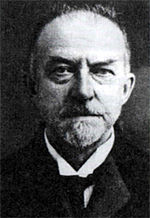
Konstantīns Pēkšēns is one of the most prominent Latvian architects of all times. After Jānis Baumanis he is the epitome of the second generation of Latvian architects. Many Latvian cities and towns take pride in buildings designed by Pēkšēns, but Riga alone can boast more than 250 multi-storey brick buildings and a great number of wooden houses erected following his designs.
Pāvils Dreijmanis was a Latvian architect and recipient of the Cross of Recognition medal and the Order of the Three Stars.
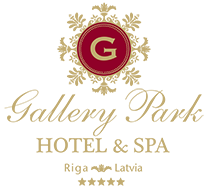
Gallery Park Hotel & SPA is a 5 star hotel in Riga, Latvia, Gallery Park Hotel & SPA was established in 2009 after the grand restoration and has been already awarded the Best Hotel in Latvia and is located in the heart of Riga in a 19th-century building that is on the list of the World Heritage sites by UNESCO.
Aleksandrs Klinklāvs was a Latvian architect.
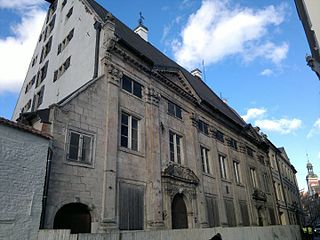
The Dannenstern House is a historical building in the Old town of Riga, Latvia.

The Art Nouveau architecture in Riga makes up roughly one third of all the buildings in the centre of Riga, making Latvia's capital the city with the highest concentration of Art Nouveau architecture anywhere in the world. Built during a period of rapid economic growth, most of Riga's Art Nouveau buildings date from between 1904 and 1914. The style is most commonly represented in multi-storey apartment buildings. Stylistic influences derived not least from present-day Austria, Finland and Germany, while the establishment of a faculty of architecture in Riga in 1869 was instrumental in providing a local cadre of architects. This included, but was not limited to, some of the first formally trained ethnic Latvian architects. As elsewhere, the Art Nouveau movement in Riga was driven by a desire to express greater individuality, local attachment and a more rational kind of architecture than that which had dominated during the 19th century. Stylistically, the Art Nouveau architecture of Riga can be further divided into four different stages: Eclectic, Perpendicular, National Romantic; and Neo-Classical.

Jānis Alksnis was a Latvian architect.

Mārtiņš Nukša was a Latvian diplomat and architect. He worked as an architect in Riga during the heyday of Art Nouveau architecture and from 1920 as a diplomat representing Latvia. He was arrested by Soviet authorities after the occupation of Latvia and executed in 1942.
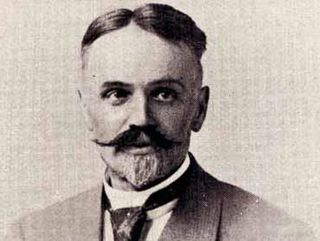
Carl Johann Wilhelm Neumann was a Baltic German architect and art historian.

Augusts Malvess was a Latvian architect.

Max Gustav Richard Scherwinsky was a German-born architect working mainly in Riga, the present-day capital of Latvia.

Verners Vitands was Latvian architect. Vitands designed the Unity House in Daugavpils in 1936-1937. He was responsible for a number of important public buildings of 20th-century modernist design, better known as functionalism in Latvia, constructed in Latvia in the first half of the 20th century.